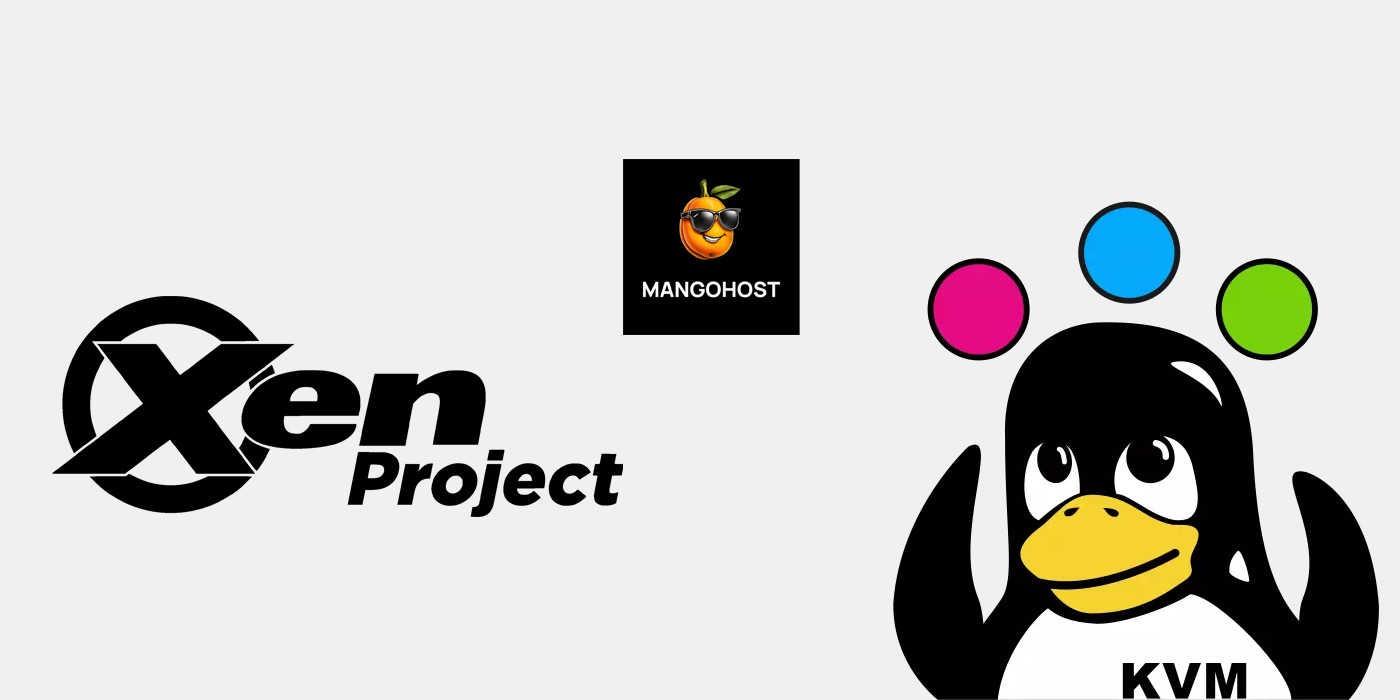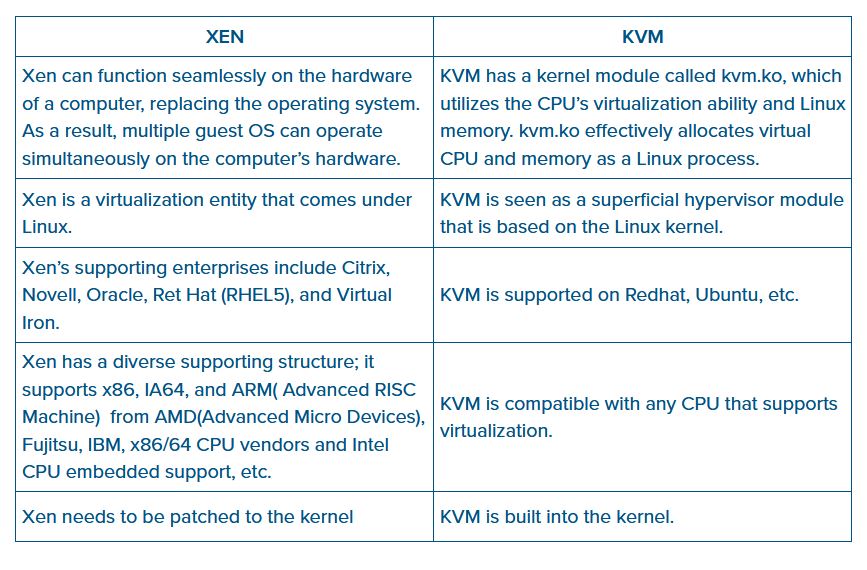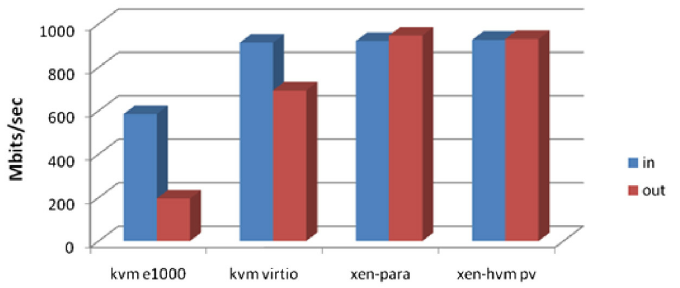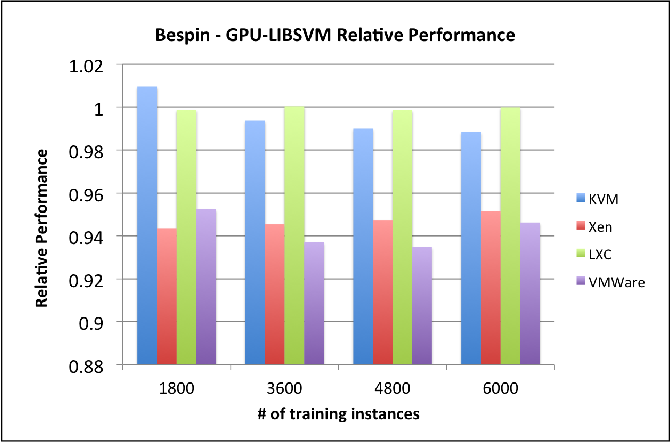
Xen VPS vs KVM VPS: Choosing the Right Virtualization Technology
In the past, virtual servers based on Xen virtualization were more popular in the hosting market, but by 2023, the market presence of Xen virtual servers has significantly diminished. Why has this happened? Is KVM truly superior, and is it worth making the switch from the older, but stable XEN?
Understanding Xen Hypervisor
Released in 2003, Xen is an open-source, type-1 hypervisor that operates directly on a computer’s hardware, eliminating the need for a host operating system. This feature allows Xen to manage every aspect of a computer, including hardware, peripherals, and input/output resources, without any intermediary.
Xen is compatible with multiple operating systems and supports Linux kernel, making it available in all Linux distributions. Additionally, it is an essential component for guest virtual machines, enabling them to access hardware components.
Xen provides two types of virtualization: paravirtualization and full virtualization. Paravirtualization involves running a modified version of the OS that is aware of its virtualized state, allowing for more efficient interaction between the OS and the hardware. Full virtualization, on the other hand, requires CPU support for virtualization extensions, allowing unmodified operating systems to instruct the hardware directly.
Advantages of Xen Hypervisor
- Ideal for small organizations due to its free availability and efficient resource management.
- Supports real-time transition of virtual machines, maintaining system operations despite hardware changes.
- Open-source nature prevents vendor lock-in issues.
- Provides a user-friendly graphical interface.
- Securely transfers virtual servers from one physical server to another.
- Offers a console for hypervisor pool upgrades.
- Boasts a large community support for backup, storage handling, capacity planning, and other management strategies.
Disadvantages of Xen Hypervisor
- Does not support USB devices.
- The free version offers limited services.
- Upgrading host storage space can be challenging.
- Upgrading process can be complex for new users.
- Potential instability in virtual networks.
Exploring KVM Hypervisor
Kernel-based Virtual Machine (KVM) is a type-1, open-source, Linux-based virtualization technology that transforms Linux into a hypervisor, enabling the host machine to operate multiple segregated virtual environments. It is compatible with Linux operating systems like Ubuntu, SUSE, and Red Hat Enterprise Linux, and supports other operating systems like Windows.
KVM operates as a regular Linux process, with each virtual machine having dedicated virtual hardware. It offers hardware-assisted paravirtualization, which increases efficiency and reduces the need for guest system modifications.
Advantages of KVM Hypervisor
- Provides robust security features inherent to Linux.
- Allows users to customize features based on personal or business needs.
- Benefits from Linux’s advanced memory management.
- Supports swift offline and online migration of machines with no risk of data loss or downtime.
Disadvantages of KVM Hypervisor
- The setup process can be complex.
- Limited processor support.
- Lacks built-in CPU virtualization support, affecting performance.
- Centralized hardware increases the risk of data loss in the event of system failure.
Xen vs. KVM: A Comprehensive Comparison

- Xen operates directly on computer hardware, while KVM requires a kernel module called kvm.ko.
- Xen is a virtualization entity under Linux, whereas KVM is a module based on the Linux kernel.
- Xen is supported by enterprises like Citrix, Novell, Oracle, and Red Hat, while KVM is supported on Redhat, Ubuntu, etc.
- Xen supports a wide range of hardware, including x86, IA64, and ARM, whereas KVM is compatible with any CPU supporting virtualization.

Final Thoughts
Virtualization has significantly transformed the IT landscape, simplifying deployment across platforms. With Xen and KVM hypervisors, virtualization has become more versatile and efficient. When choosing between the two, organizations should consider their infrastructure, staff resources, and cloud usage preferences. We have both services, Xen VPS and KVM VPS ready to fit you hosting needs.
Remember, regardless of the chosen hypervisor, organizations are still vulnerable to ransomware attacks and other disasters. Therefore, it is advisable to employ reliable backup and recovery software like Storware to mitigate these risks.


This article incorporates information and material from various online sources. We acknowledge and appreciate the work of all original authors, publishers, and websites. While every effort has been made to appropriately credit the source material, any unintentional oversight or omission does not constitute a copyright infringement. All trademarks, logos, and images mentioned are the property of their respective owners. If you believe that any content used in this article infringes upon your copyright, please contact us immediately for review and prompt action.
This article is intended for informational and educational purposes only and does not infringe on the rights of the copyright owners. If any copyrighted material has been used without proper credit or in violation of copyright laws, it is unintentional and we will rectify it promptly upon notification. Please note that the republishing, redistribution, or reproduction of part or all of the contents in any form is prohibited without express written permission from the author and website owner. For permissions or further inquiries, please contact us.


